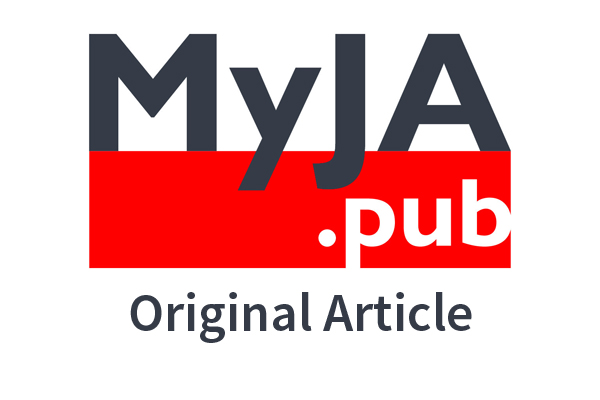Keywords
Abstract
Introduction: Many paediatric difficult airway guidelines have recommended supraglottic airway devices (SGAs) as an indispensable tool in the algorithm for managing failed intubation scenarios. It is used for maintaining ventilation in a difficult or failed intubation. The newer generation SGAs can be used as intubating conduits in patients with a difficult airway. The aim of this study was to report the efficacy and safety of Ambu® AuraGain™(Ambu A/S, Ballerup, Denmark) as a conduit for intubation in paediatric patients.
Methods: Local ethics approval and informed consent were obtained before patient enrolment. Sixteen patients aged 3–12 years old were recruited. Following the induction of anaesthesia and insertion of the Ambu AuraGain, fibreoptic guided intubation was performed via the SGA. The primary outcome was the time taken for successful tracheal intubation. Secondary outcomes included the number of attempts and the time required for insertion and removal of Ambu AuraGain, oropharyngeal leak pressures, fibre optic grading of glottic views, and complications from the intubation.
Results: The overall success rate concerning intubation was 87.5% (14 patients), with a mean intubation time of 57.0 ± 39.4 seconds. Successful first attempt intubations were achieved in 13 patients (81.3%). The results showed easy removal of the Ambu AuraGain device with a mean SGA removal time of 27.2 ± 19.8 seconds. No significant complications occurred throughout the study.
Conclusion: The Ambu AuraGain device can be considered safe and effective as a conduit for intubation in paediatric patients.
References
American Society of Anesthesiologists Task Force on Management of the Difficult Airway. Practice Guidelines for Management of the Difficult Airway: An Updated Report by the American Society of Anesthesiologists Task Force on Management of the Difficult Airway. Anesthesiology. 2003;98(5):1269-1277. https://doi.org/10.1097/00000542-200305000-00032
Frerk C, Mitchell VS, McNarry AF, et al. Difficult Airway Society 2015 guidelines for management of unanticipated difficult intubation in adults. Br J Anaesth. 2015;115(6):827-848. https://doi.org/10.1093/bja/aev371.
Pawar DK, Doctor JR, Raveendra US, et al. All India Difficult Airway Association 2016 guidelines for the management of unanticipated difficult tracheal intubation in Paediatrics. Indian J Anaesth. 2016;60(12):906-914. https://doi.org/10.4103/0019-5049.195483
Jagannathan N, Hajduk J, Sohn L, et al. A randomised comparison of the Ambu® AuraGain™ and the LMA® supreme in infants and children. Anaesthesia. 2016;71(2):205-212. https://doi.org/10.1111/anae.13330
Parikh DA, Jain RA, Lele SS, Tendolkar BA. A cohort evaluation of clinical use and performance characteristics of Ambu(®) AuraGain™: A prospective observational study. Indian J Anaesth. 2017;61(8):636-642. https://doi.org/10.4103/ija.IJA_285_17
Brimacombe J, Berry A. A proposed fiber-optic scoring system to standardize the assessment of laryngeal mask airway position. Anesth Analg. 1993;76(2):457.
Jagannathan N, Kozlowski RJ, Sohn LE, et al. A clinical evaluation of the intubating laryngeal airway as a conduit for tracheal intubation in children. Anesth Analg. 2011;112(1):176-182. https://doi.org/10.1213/ANE.0b013e3181fe0408
Sinha R, Chandralekha, Ray BR. Evaluation of air-Q™ intubating laryngeal airway as a conduit for tracheal intubation in infants--a pilot study. Paediatr Anaesth. 2012;22(2):156-160. https://doi.org/10.1111/j.1460-9592.2011.03710.x
Jagannathan N, Sohn LE, Sawardekar A, et al. A randomized trial comparing the Ambu ® Aura-i ™ with the air-Q ™ intubating laryngeal airway as conduits for tracheal intubation in children. Paediatr Anaesth. 2012;22(12):1197-1204. https://doi.org/10.1111/pan.12024
Girgis KK, Youssef MM, ElZayyat NS. Comparison of the air-Q intubating laryngeal airway and the cobra perilaryngeal airway as conduits for fiber optic-guided intubation in pediatric patients. Saudi J Anaesth. 2014;8(4):470-476. https://doi.org/10.4103/1658-354X.140841
Jagannathan N, Sohn L, Ramsey M, Huang A, et al. A randomized comparison between the i-gel™ and the air-Q™ supraglottic airways when used by anesthesiology trainees as conduits for tracheal intubation in children. Can J Anaesth. 2015;62(6):587-594. https://doi.org/10.1007/s12630-014-0304-9
Joshi R, Rudingwa P, Kundra P, et al. Comparision of Ambu AuraGain™ and LMA(®) ProSeal in children under controlled ventilation. Indian J Anaesth. 2018;62(6):455-460. https://doi.org/10.4103/ija.IJA_86_18






